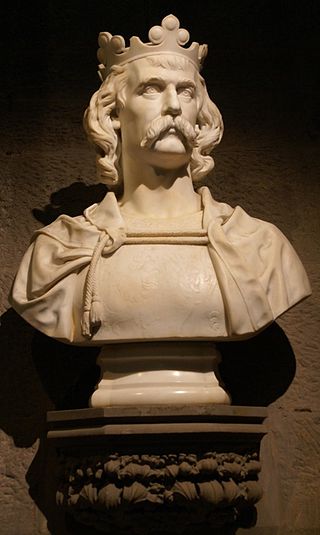
Robert I, popularly known as Robert the Bruce, was King of Scots from 1306 to his death in 1329. Robert led Scotland during the First War of Scottish Independence against England. He fought successfully during his reign to restore Scotland to an independent kingdom and is regarded in Scotland as a national hero.
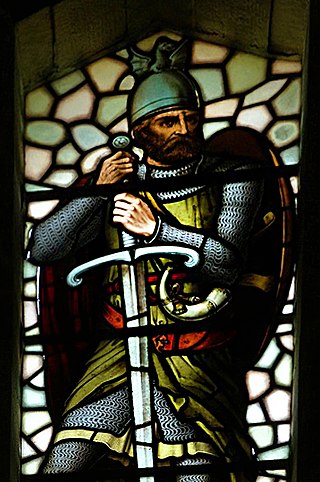
Sir William Wallace was a Scottish knight who became one of the main leaders during the First War of Scottish Independence.

Year 1297 (MCCXCVII) was a common year starting on Tuesday of the Julian calendar.

The Wars of Scottish Independence were a series of military campaigns fought between the Kingdom of Scotland and the Kingdom of England in the late 13th and early 14th centuries.

The Battle of Stirling Bridge was fought during the First War of Scottish Independence. On 11 September 1297, the forces of Andrew Moray and William Wallace defeated the combined English forces of John de Warenne, 6th Earl of Surrey, and Hugh de Cressingham near Stirling, on the River Forth.

Lanark is a town in South Lanarkshire, Scotland, located 20 kilometres to the south-east of Hamilton. The town lies on the River Clyde, at its confluence with Mouse Water. In 2016, the town had a population of 9,050.
The Battle of Falkirk, on 22 July 1298, was one of the major battles in the First War of Scottish Independence. Led by King Edward I of England, the English army defeated the Scots, led by William Wallace. Shortly after the battle Wallace resigned as Guardian of Scotland.
Andrew Moray, also known as Andrew de Moray, Andrew of Moray, or Andrew Murray, an esquire. He became one of Scotland's leaders during the First Scottish War of Independence, initially raising a small band of supporters at Avoch Castle in early summer 1297 to fight King Edward I of England. He soon had successfully regained control of the north for the absent Scots king, John Balliol. Moray subsequently merged his army with that of William Wallace, and jointly led the combined army to victory at the Battle of Stirling Bridge on 11 September 1297. In the fighting at Stirling, Moray was severely wounded. He died at an unknown date and place that year.

The First War of Scottish Independence was the first of a series of wars between English and Scottish forces. It lasted from the English invasion of Scotland in 1296 until the de jure restoration of Scottish independence with the Treaty of Edinburgh–Northampton in 1328. De facto independence was established in 1314 at the Battle of Bannockburn. The wars were caused by the attempts of the English kings to establish their authority over Scotland while Scots fought to keep English rule and authority out of Scotland.

William de Lamberton, sometimes modernized as William Lamberton, was Bishop of St Andrews from 1297 until his death. Lamberton is renowned for his influential role during the Scottish Wars of Independence. He campaigned for the national cause under William Wallace and later Robert the Bruce. As Bishop of St Andrews, the most powerful seat in Scotland, Bishop Lamberton along with Bishop Robert Wishart of Glasgow conducted the coronation of Robert the Bruce as King Robert I. Lamberton would go on to have a vital role in the formulation of the Declaration of the Clergy 1310 and the Declaration of Arbroath which would lead to Scottish Independence.
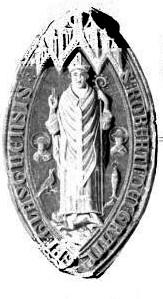
Robert Wishart was Bishop of Glasgow during the Wars of Scottish Independence and a leading supporter of Sir William Wallace and King Robert Bruce. For Wishart and many of his fellow churchmen, the freedom of Scotland and the freedom of the Scottish church were one and the same thing. His support for the national cause was to be of crucial importance at some critical times.

Sir William Douglas "le Hardi", Lord of Douglas was a Scottish nobleman and soldier.

Henry de Percy, 1st Baron Percy of Alnwick was a medieval English magnate.

Seagate Castle is a castle and fortified town house in North Ayrshire, in the town of Irvine, close to the River Irvine, Scotland. The castle was formerly a stronghold, a town house, and later a dower house of the Montgomery Clan. The castle overlooks the oldest street in Irvine, which was once the main route between the town and the old harbour at Seagatefoot, which by 1606, was useless and abandoned due to silting. The remains of the castle are protected as a scheduled ancient monument.

Trindlemoss Loch, Scott's / Scot's Loch or the Loch of Irvine was situated in a low-lying area running from Ravenspark to near Stanecastle and down to Lockwards, now represented only by the playing fields off Bank Street in the Parish of Irvine, North Ayrshire, Scotland. The loch was natural, sitting in a hollow created by glaciation. The loch waters were progressively drained and in 1691 this was finally achieved.

Sir John Menteith of Ruskie and Knapdale was a Scottish nobleman during the Wars of Scottish Independence. He is known for his capture of Sir William Wallace in 1305 and later joined with King Robert I of Scotland and received large land grants in Knapdale and Kintyre for his service. He is described as "guardian" of the Earldom of Menteith, as his great-nephew Alan II, Earl of Menteith was a minor at the time of the death of Alan I, Earl of Menteith.
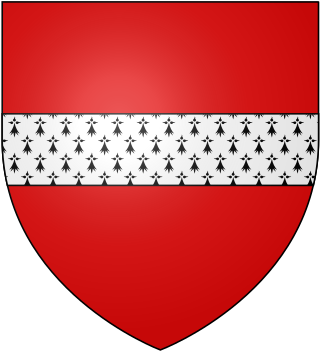
Sir Reginald Crawford was a Scottish knight who took part in the Wars of Scottish Independence.

Sir Alexander Lindsay, Lord of Barnweill, Byres and Crawford, also known as Alexander de Lindsay, was a Scottish noble.

Outlaw King is a 2018 historical action drama film about 14th-century Scottish king Robert the Bruce during the Scottish Wars of Independence. The film largely takes place during the 3-year period from 1304, when Bruce decides to rebel against the rule of Edward I over Scotland, up to the 1307 Battle of Loudoun Hill. Outlaw King was co-written, produced, and directed by David Mackenzie.
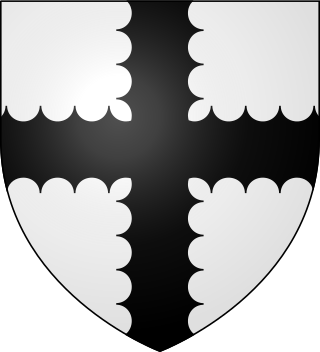
Sir Henry St Clair was a 13th- and 14th-century Scottish noble, who was the 7th Baron of Roslin and Lord of Catcune.

















